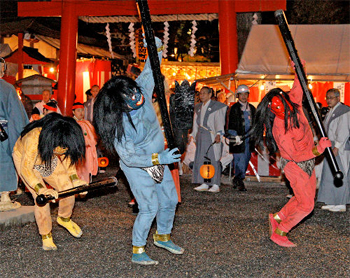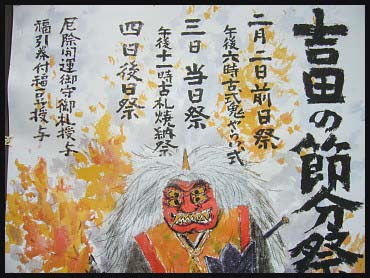https://edoflourishing.blogspot.jp/2017/03/ushigome.html
..............................................................................................................................................
Ushigome Fukuromachi 江戸牛込袋町
Its northern part borders to Kagurazaka. In 1869 Fukuromachi became Ushigome Fukuromachi.

Part of the 牛込城 Ushigome Castle district in the 戦国時代 Sengoku Period of Warring States (1467 - 1567).
In the early Edo period it was part of 牛込肴町 Ushigome Sakanamachi, and many dealers in straw lived there
(藁店 waradana). They lived mainly on a slope ending at the castle gate 御徒組の門 Okachigumi no mon, thus on a fukurokooji 袋小路 cul-de-sac. This turned to the naming of Fukuromachi.
In 1645 the temple Kooshooji, Kōshōji 光照寺 Kosho-Ji was established and the district flourished in its shadow.
In 1765 the 司天台 government observatory was relocated here, but the many trees in the area were a distraction and the observatory was moved to Asakusa in 1782.
. tenmondai 天文台 Edo observatory - Introduction .
In the late Edo period an entertainment establishment named 藁店亭 Waradana Tei was built and 都々逸坊扇歌 Dodoitsubo Senka the First (1804 - 1852) was active here.
He was a singer- raconteur who scored his greatest triumphs singing dodoitsu and other popular songs.
In the Meiji period, this became the 和良店亭 Waradana Tei, where 夏目漱石 Natsume Soseki used to come visiting.

- reference : Dodoitsubo Senka and the. Yose of Edo -
Dodoitsu (都々逸) is a form of Japanese poetry developed towards the end of the Edo Period.
Often concerning love or work, and usually comical, Dodoitsu poems consist of four lines with the syllabic structure 7-7-7-5 and no rhyme for a total of 26 syllables, making it one of the longer Japanese forms. The form, tone and structure of Dodoitsu derive from Japanese folk song traditions.
. rōsaibushi 弄斎節 rosai-bushi, Rosai comic song .
.......................................................................

modern 地蔵坂(藁店)Jizo-saka, Waradana
.......................................................................
itachi no kai 鼬の怪 the monster weasel
In 1821 the daughter of a merchant living in 江戸牛込袋町 Ushigome Fukuromachi had a strange disease of swellings in many parts of her body. Eventually even needles were coming ot of the swellings. At night when she slept, they saw a weasle running around in her bedsheets and under the matress.
..............................................................................................................................................
..............................
Ushigome Fukuromachi 江戸牛込袋町
Its northern part borders to Kagurazaka. In 1869 Fukuromachi became Ushigome Fukuromachi.

Part of the 牛込城 Ushigome Castle district in the 戦国時代 Sengoku Period of Warring States (1467 - 1567).
In the early Edo period it was part of 牛込肴町 Ushigome Sakanamachi, and many dealers in straw lived there
(藁店 waradana). They lived mainly on a slope ending at the castle gate 御徒組の門 Okachigumi no mon, thus on a fukurokooji 袋小路 cul-de-sac. This turned to the naming of Fukuromachi.
In 1645 the temple Kooshooji, Kōshōji 光照寺 Kosho-Ji was established and the district flourished in its shadow.
In 1765 the 司天台 government observatory was relocated here, but the many trees in the area were a distraction and the observatory was moved to Asakusa in 1782.
. tenmondai 天文台 Edo observatory - Introduction .
In the late Edo period an entertainment establishment named 藁店亭 Waradana Tei was built and 都々逸坊扇歌 Dodoitsubo Senka the First (1804 - 1852) was active here.
He was a singer- raconteur who scored his greatest triumphs singing dodoitsu and other popular songs.
In the Meiji period, this became the 和良店亭 Waradana Tei, where 夏目漱石 Natsume Soseki used to come visiting.

- reference : Dodoitsubo Senka and the. Yose of Edo -
Dodoitsu (都々逸) is a form of Japanese poetry developed towards the end of the Edo Period.
Often concerning love or work, and usually comical, Dodoitsu poems consist of four lines with the syllabic structure 7-7-7-5 and no rhyme for a total of 26 syllables, making it one of the longer Japanese forms. The form, tone and structure of Dodoitsu derive from Japanese folk song traditions.
. rōsaibushi 弄斎節 rosai-bushi, Rosai comic song .
..............................

modern 地蔵坂(藁店)Jizo-saka, Waradana
..............................
itachi no kai 鼬の怪 the monster weasel
In 1821 the daughter of a merchant living in 江戸牛込袋町 Ushigome Fukuromachi had a strange disease of swellings in many parts of her body. Eventually even needles were coming ot of the swellings. At night when she slept, they saw a weasle running around in her bedsheets and under the matress.
..............................







































